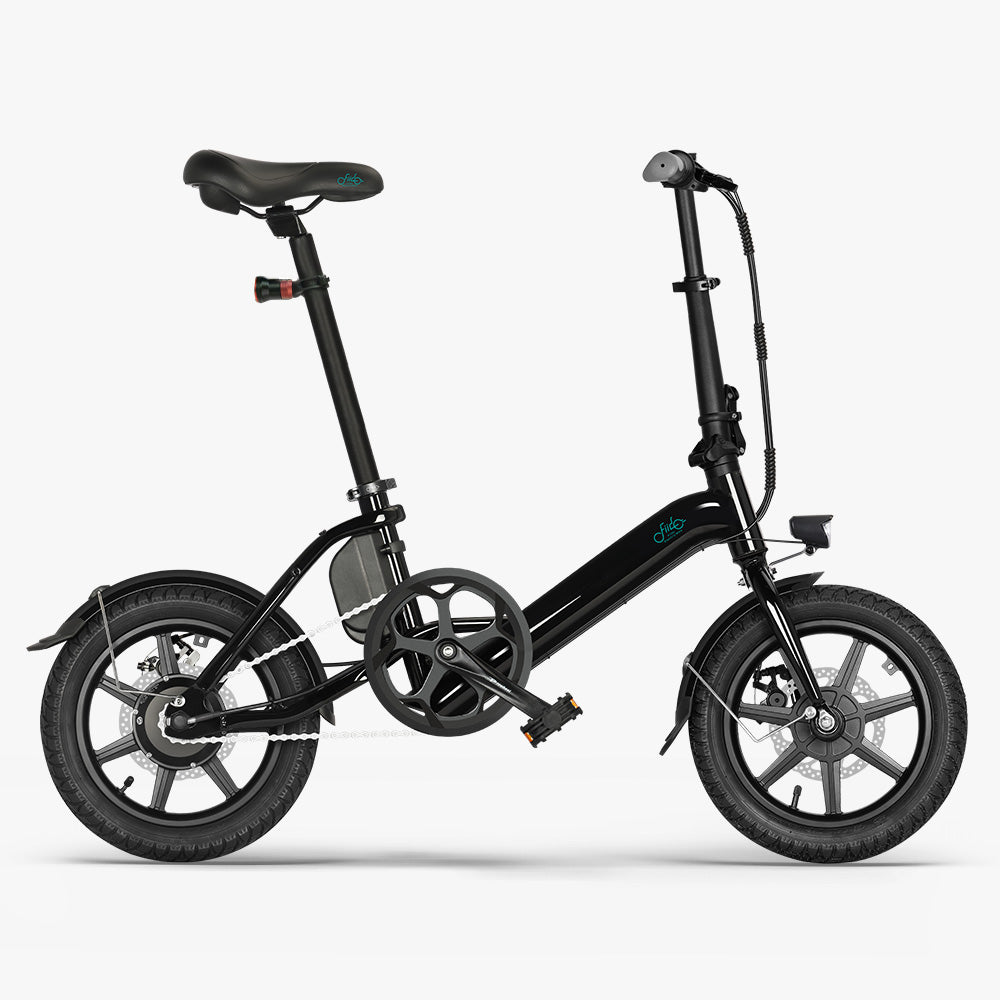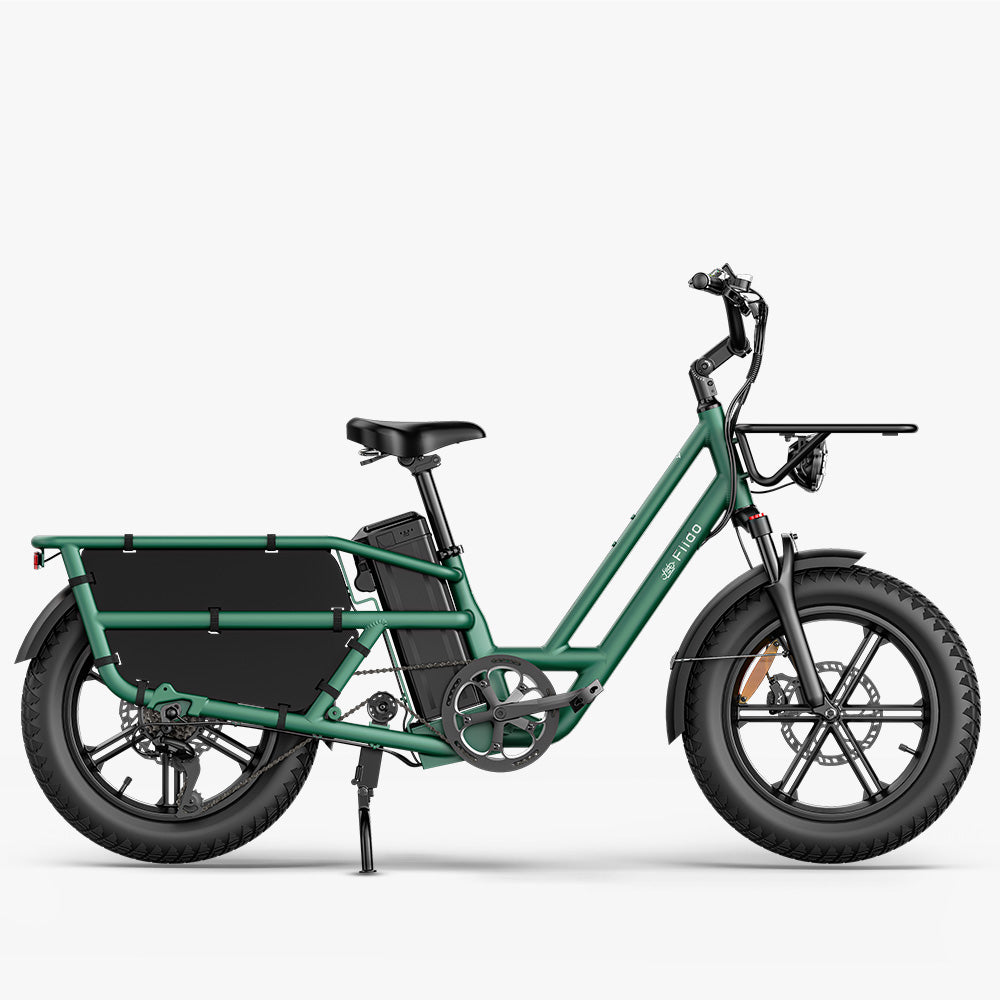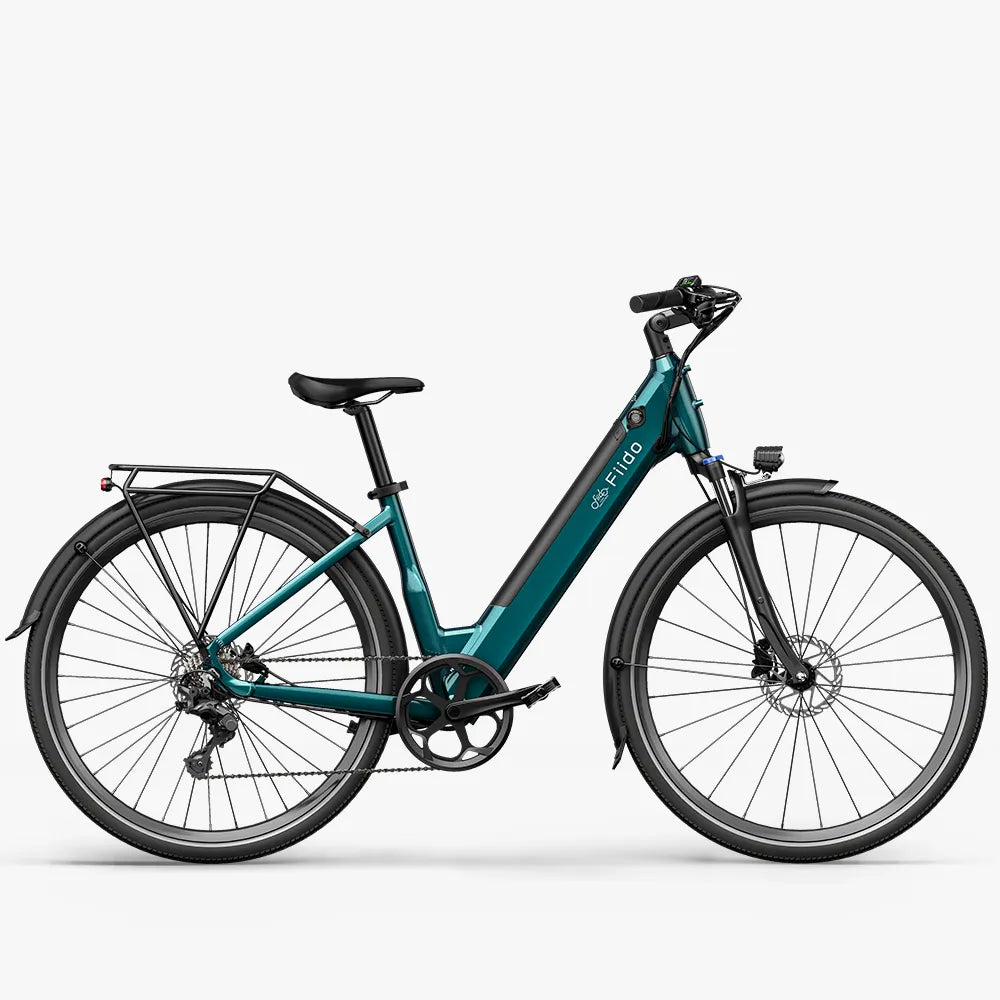A common question among parents and young riders is: "At what age can you ride an e-bike?"
In the US, regulations vary by state, but many states require riders to be at least 14 to 16 years old for Class 2 or Class 3 e-bikes, while Class 1 e-bikes often have no strict minimum age.

Why Age Limits Matter for Electric Bike Usage
Age limits for riding ebikes are crucial to ensure the safety of both cyclists and other road users. E-bikes, capable of higher speeds than traditional bicycles, require riders to have a stronger awareness of traffic rules, proper physical coordination, and quick reaction times. Respecting these limits helps prevent accidents and promotes responsible riding.
E-Bike Laws and Regulations in the United States
In the United States, electric bike regulations vary by state and by bike class (Class 1, 2, or 3):
-
Motor Power:
Most states define e-bikes as having a motor of 750 watts (1 horsepower) or less. -
Pedal Assistance and Throttle:
Class 1 and Class 2 e-bikes provide assistance up to 20 mph (32 km/h); Class 2 bikes allow throttle without pedaling. -
Speed Limits:
Class 3 ebikes assist up to 28 mph (45 km/h) and are subject to additional restrictions. -
Helmet Requirements:
Helmet laws vary; many states require helmets for riders under 18, especially for Class 3 bikes. -
Insurance and Licensing:
Standard e-bikes generally do not require insurance or a driver’s license. -
Minimum Age:
Most states set a minimum age between 14 and 16 years old, depending on the class of e-bike.
Note: Always check your state’s Department of Motor Vehicles (DMV) website for the latest local regulations, as rules may vary.

Regional Differences and International Regulations for EBikes
Differences Between U.S. States
In the United States, ebike laws can vary significantly from state to state.
-
Some states allow e-bikes on bike lanes and trails, while others restrict certain classes (especially Class 3 bikes) to roadways only.
-
Helmet laws, minimum age requirements, and registration rules can differ widely depending on local regulations.
Federal vs. State Law
There is no unified federal law that governs the use of e-bikes across all 50 states. Instead, states individually classify e-bikes—mostly following a 3-class system:
-
Class 1: Pedal-assist only, up to 20 mph.
-
Class 2: Throttle-assisted up to 20 mph.
-
Class 3: Pedal-assist only, up to 28 mph.
Some states impose additional requirements, such as mandatory helmet use for minors or for Class 3 riders.
Similarities Across the U.S.
-
Most states classify low-speed e-bikes separately from mopeds and motor vehicles.
-
E-bikes that comply with maximum motor power (750 watts) and speed limits (20–28 mph) generally don't require insurance or a driver's license.
Safety Considerations for E-Bike Riders
Safety Risks for Minors and Teenagers Using E-Bikes
While e-bikes are a fun and efficient mode of transportation, they also present specific safety risks, especially for younger riders.
-
Physical Coordination and Reaction Time:
Children and teenagers may not yet have fully developed the coordination and reflexes needed to safely handle an e-bike. The added speed and motor power can increase the risk of accidents if not properly managed. -
Traffic Awareness and Understanding of Rules:
Young riders must understand traffic laws, the meaning of signs and signals, and basic right-of-way rules. Education and supervision are crucial to ensure minors ride responsibly.
U.S. Law Note: In many states, minors are allowed to ride Class 1 and Class 2 e-bikes, but typically must be at least 14–16 years old. Some states also require minors to wear helmets when operating any electric bike.
Safety Risks for Adults Using E-Bikes
Even adults face safety challenges when riding e-bikes. It's important to be aware of personal physical limits and road conditions.
-
Physical Fitness and Health Requirements:
Riders should ensure they are in good health before using an e-bike, particularly for long commutes or demanding terrain. -
Skill and Familiarity with E-Bikes:
Proper handling of an e-bike requires practice. Adults should familiarize themselves with the specific model, including pedal assist, throttle use, and braking systems.
Tip: Many states encourage new e-bike riders to practice in low-traffic areas before riding in dense urban environments.
Parental Responsibilities and Guidance
Parents play a critical role in ensuring the safe use of e-bikes by their children.
-
Choosing the Right E-Bike Model:
Not all e-bikes are suitable for minors. Parents should select models appropriate for the rider’s size, age, and skill level. -
Education and Supervision:
Teaching traffic safety and supervising young riders is key, especially during their early experiences with e-bikes. -
What Parents Should Watch For:
-
Speed Management: Make sure children do not exceed safe speeds.
-
Route Selection: Start with safe, low-traffic routes.
-
Safety Gear: Helmets are critical, and gloves, reflectors, and lights are highly recommended.
-
-
Routine Bike Maintenance:
Regularly check brakes, tires, and lights to ensure the bike remains safe. -
Establishing Family Safety Rules:
Clear rules about helmet use, traffic behavior, and ride zones can promote safer family biking.
Overview of Different Fiido Electric Bike Models
Fiido offers a wide range of electric bikes, each designed with specific features to meet the needs of different age groups and riding purposes.
Types of Electric Bikes
-
Commuter E-Bikes: Lightweight ebike, ideal for everyday city travel.
-
Electric Mountain Bikes: Built tough for rough terrain and off-road adventures.
-
Folding E-Bikes: Perfect for those needing a compact, portable option for urban living or multi-modal travel.
Recommended Fiido Models by Age Group
Teenagers: Lightweight, easy-to-control bikes like the Fiido D3 Pro mini electric bike are recommended.
Fiido D3 Pro Mini Electric Bike
The most affordable and adorable electric bike.
Reminder: Prices are subject to the product detail page ,some earlier card details may have been updated.
Note: Riders should meet minimum state age requirements and always wear helmets.
Adults: Versatile models like the Fiido T2 cargo ebike, perfect for urban commuting and errands.
Fiido T2 Longtail Cargo E-bike
Multifunctional, family-friendly cargo ebike with endless possibilities.
Reminder: Prices are subject to the product detail page ,some earlier card details may have been updated.
Seniors: Comfort-focused bikes with soft pedal assist and ergonomic designs, such as the Fiido C11 light weight ebike, offering ease of use and enhanced safety.
Fiido C11 City E-bike
Fiido C11 - the best electric bike for a dynamic and safe city adventure.
Reminder: Prices are subject to the product detail page ,some earlier card details may have been updated.

Conclusion
Choosing an e-bike suited to your age and physical abilities is essential, while also respecting the relevant legal regulations. Key points to keep in mind include:
Physical Considerations
-
Height: The right frame size ensures a comfortable and safe ride. Always select an e-bike that matches your height and preferred riding posture.
-
Weight: The weight of the e-bike affects handling and performance. If lifting heavy objects is challenging for you, opt for a lightweight model.
-
Fitness Level: If you're not highly fit, choosing an e-bike with a more powerful motor and a larger battery can help you tackle hills and longer rides more easily.
Test Before You Buy
The best way to find the right e-bike is to test ride different models. Many authorized Fiido retailers in the U.S. offer demo rides, allowing you to assess comfort, maneuverability, and performance firsthand.
Look Beyond Price
E-bike prices vary widely. Don’t focus solely on the lowest price; instead, evaluate build quality, motor power, battery life, and overall reliability. A good quality e-bike is a long-term investment in comfort, convenience, and safety.
Traffic Laws and Regulations
E-bike regulations in the United States vary by state:
-
Age Limit: In many states, the minimum age to ride a Class 1 or Class 2 e-bike is 14 to 16 years old.
-
License Requirement: For standard Class 1 and Class 2 e-bikes (up to 20 mph, motor ≤750W), no driver’s license is required.
-
Helmet Use: Helmet laws differ; many states require helmets for riders under 18.
-
Where You Can Ride: Some states restrict where higher-speed Class 3 e-bikes can be used, often limiting them to roads or designated lanes.
Always check your state’s specific laws before riding.
FAQs
-
What is the minimum legal age to ride an e-bike?
→ In most U.S. states, the minimum age is between 14 and 16 years, depending on the class. -
Is a special driver’s license needed?
→ No license is required for Class 1 and Class 2 e-bikes under 750W. -
What’s the main difference between electric and traditional bikes?
→ Electric bikes assist your pedaling with a motor, allowing you to travel faster with less effort. -
How can parents ensure minors ride e-bikes safely?
→ Make sure they always wear helmets, understand traffic rules, are supervised when starting out, and ride on safe, low-traffic routes.
In conclusion, while e-bikes are accessible and exciting, proper education, responsible usage, and following local laws are key to a safe and enjoyable riding experience.



















